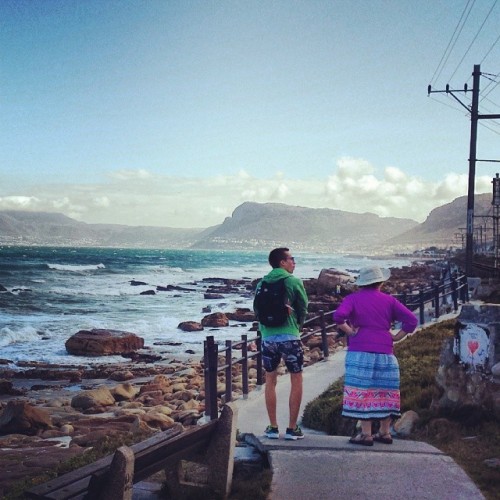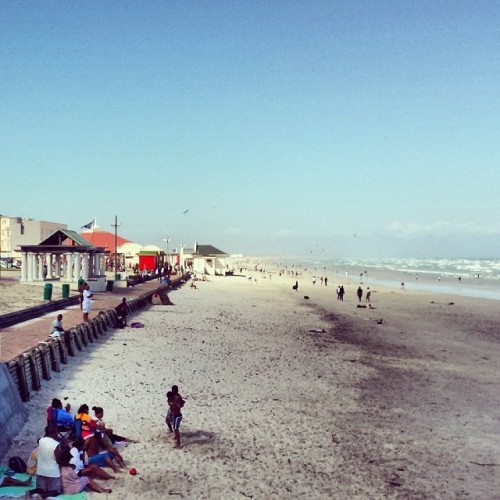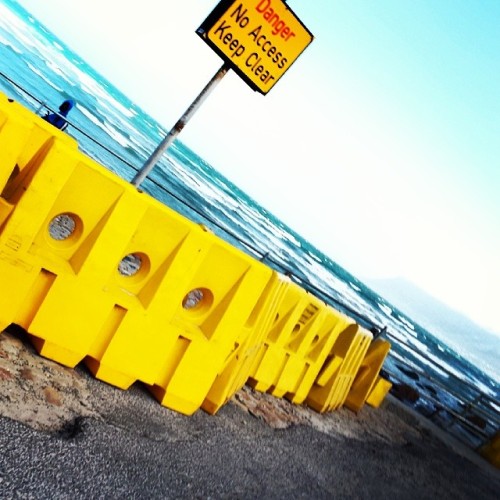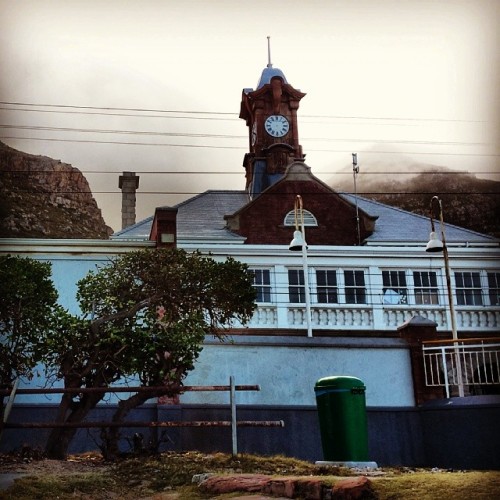 |
| Cape of Storms: Bright colours, hearts, humans and white crested seahorses all thoughting about the gradually approaching autumn as summer fades and the sun heads northwards |
The south-easter continues to thrust a voluptuous and angry bank of cloud over Table Mountain and in to the city bowl, and has done so for much of the weekend.
The large roof-high window in my office looks directly at the mountain; I'm right in line with the cable car. That's why I've made a french -press full of scalding but aromatic coffee, so to watch this mesmerising sight from the stillness of my desk, while the wind buffets the building.
Within a few months it's going to be the winter storms of slating rain that pummel my window, this western facade, seeking to seep every crevice and hairline crack.
Not for nothing is this peninsula - that's thrust into the most southern ocean off the African continent - known as the cape of storms.
Muizenberg yesterday, as the cold front began to buffet the peninsula; from there I walked along the railway line to St. James’s, then past Danger Bay to Kalkbay where the day was ended quaffing good red wine in a secret park filled with children from the village
Yesterday, at the end of the day, I walked between the ocean edge and the railway tracks from Muizenburg to St. James's, then past Danger Bay to one of my favourite villages, Kalkbay. There, with good friends, I ended the day quaffing quality red wine in a secret filled with children from, buzzing, the village.
One of those, um, 'pocket' shots you know you didn't take!
Living in Cape Town you are always negotiating the pincer of land that divides the two oceans; ruling the western seaboard is the Atlantic, the eastern seaboard is witness to the much warmer, heartier Indian. One bitterly cold, one wonderfully warmer; both with different reeks, moods and character traits.
Nevertheless this peninsula is at the mercy of the tempestuous elements and the city can have utterly different weather simultaneously depending where you are.
The rusted and battered ocean side of Muizenburg station in all its moodiness as the cloud bank fogged the peninsula
The city and its surrounds ooze myths and legends, which among others explain the weather; the version below has, um, a particular Cape Town slant to it:
As the story goes Jan van Hunks, a pirate in the early 18th century, retired from his eventful life at sea to live on the slopes of Devil’s Peak. He spent his days sitting on the mountain smoking weed on his pipe.
One day a stranger approached and asked to borrow some spliff. After a bit of bragging, a smoking contest ensued which lasted for days.
Van Hunks finally defeated the stoned stranger - who unfortunately turned out to be the devil - and they both vanished in a puff of cannabis smoke. Legend has it that the cloud of "tobacco" smoke they left became the "table-cloth" - the famous white cloud that spills over Table Mountain when the south-easter blows in summer.
The south-easter has been known to ravage and blight the peninsula for days on end.
The prevailing Spring and early Summer wind, the South-Easter (otherwise known as the "Cape Doctor") arises as a spin-off from anticyclones deep in the Southern ocean. It arrives at the peninsula by way of False Bay, its velocity often being given a boost by the "corner effect" round Cape Hangklip.
One arm of the South-Easter sweeps around the eastern flanks of Table Mountain, where its moisture, picked up from the ocean and the warm waters of False Bay, helps to keep the vegetation green through the heat of summer.
One arm of the South-Easter sweeps around the eastern flanks of Table Mountain, where its moisture, picked up from the ocean and the warm waters of False Bay, helps to keep the vegetation green through the heat of summer.
It is also a vital factor in the pollination of many plants, including the Silvertrees. The South-Easter continues on around Devil's Peak, before descending on the city.
There, it behaves somewhat in the manner of a trapped tiger, careering around in the bowl between mountain and sea. A couple of days of this is enough to purge the city's air - nowadays it is the smog instead of the plague of old which is banished. The South-Easter tends to overdo the cure, outstaying its welcome. A possible record was its performance in November 1936, when it howled without a break for 15 days, ravaging suburban gardens and penning the staff in the upper cable station for 5 days.
There, it behaves somewhat in the manner of a trapped tiger, careering around in the bowl between mountain and sea. A couple of days of this is enough to purge the city's air - nowadays it is the smog instead of the plague of old which is banished. The South-Easter tends to overdo the cure, outstaying its welcome. A possible record was its performance in November 1936, when it howled without a break for 15 days, ravaging suburban gardens and penning the staff in the upper cable station for 5 days.
Today the city is spotless, not that you'd want to be on the streets to experience it first-hand.



No comments:
Post a Comment